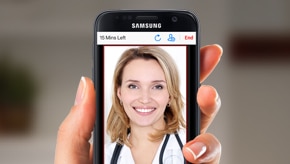How Health Systems Can Address Consumerism Trends with Telehealth
 As goes everything else, healthcare is increasingly being impacted by trends in consumerism as patients seek to make the best decisions for cost and quality. Health systems are in turn being impacted by this great consumer drive to have the best care. The World Health Organization has identified three main goals for health systems: improve the health of populations; improve the responsiveness of the health system to the population it serves; and promote fairness in financial contribution.1 Telehealth directly addresses these goals and responds to the consumerism trend. Here is a couple of ways in which telehealth helps health systems meet consumer needs and goals:
As goes everything else, healthcare is increasingly being impacted by trends in consumerism as patients seek to make the best decisions for cost and quality. Health systems are in turn being impacted by this great consumer drive to have the best care. The World Health Organization has identified three main goals for health systems: improve the health of populations; improve the responsiveness of the health system to the population it serves; and promote fairness in financial contribution.1 Telehealth directly addresses these goals and responds to the consumerism trend. Here is a couple of ways in which telehealth helps health systems meet consumer needs and goals:
Improve the Health of Populations
Health systems are moving toward a fee-for-value payment structure, which means care delivery has shifted from more visits to quality outcomes. Health systems can use telemedicine to manage patients in risk contracts and address population health management challenges. For example, telehealth eye exams are becoming popular among diabetic patients, and image and email-based telemedicine for orthopedic consultations have proven to be effective for treating mild-to-moderately severe fractures while saving patients thousands of miles in travel.2
For consumers, telehealth offers a quick and easy option for addressing healthcare needs. A recent survey by The Advisory Board Company found that consumers are willing to use telehealth for a variety of use cases, like urgent care, oncology, prescription refills, cardiology and orthopedics.3 That same study found that 57% of patients said they would strongly consider using a virtual visit if their child was sick.
Improve health system responsiveness
According to a recent survey by MerrittHawkins, patients are waiting an average of 24 days to schedule an appointment with a doctor. This has increased more than 30% since 2014, and is caused largely by national doctor shortages and population growth.4 Fast forward to the day of the appointment and patients spend 37 minutes on average traveling to the appointment, 64 minutes in the clinic waiting room, and only 20 minutes are spent face-to-face with the doctor.5 By contrast, the average wait time to see a physician via telehealth is five minutes, and requires no travel on the part of the patient.6 These types of immediate video visits are a more responsive alternative to treating patients in person. Types of responsive telemedicine visits include everything from episodic urgent care, to second opinions and behavioral health.
Health systems recognize telehealth’s invaluable role in meeting these goals, along with the goals they set for themselves as an organization. Yet telehealth is still a relatively new care delivery model. The health systems that have deployed telehealth in the past five years are considered pioneers in the industry. They’ve tested and optimized to get the most out of their telehealth program, and steadily developed a roadmap for implementation.
If you’re interested in how to get started with telehealth, Amwell has also created a roadmap to help you. To speak with one of our team members about how telehealth can enhance the care delivery model of your health system, reach out to us today to learn more.
1: World Health Organization, World Health Survey, 2003. 2: The Advisory Board Company, Direct-to-patient telemedicine: Future promise, present barrier 2016, 3: The Advisory Board Company, What Do Consumers Want from Virtual Visits, 2017, 4: Merritt Hawkins, 2017 Survey of Physician Appointment Wait Times, 2017, 5: Harvard Medical School, Paying for health care with time, 2015, 6: HIT Consultant, In-Person Visit vs. Telehealth Visit? Time is Money, 2015, 7: Amwell, Setting the Medical Record Straight: Integrating Telehealth With Your EMR, 2017.


